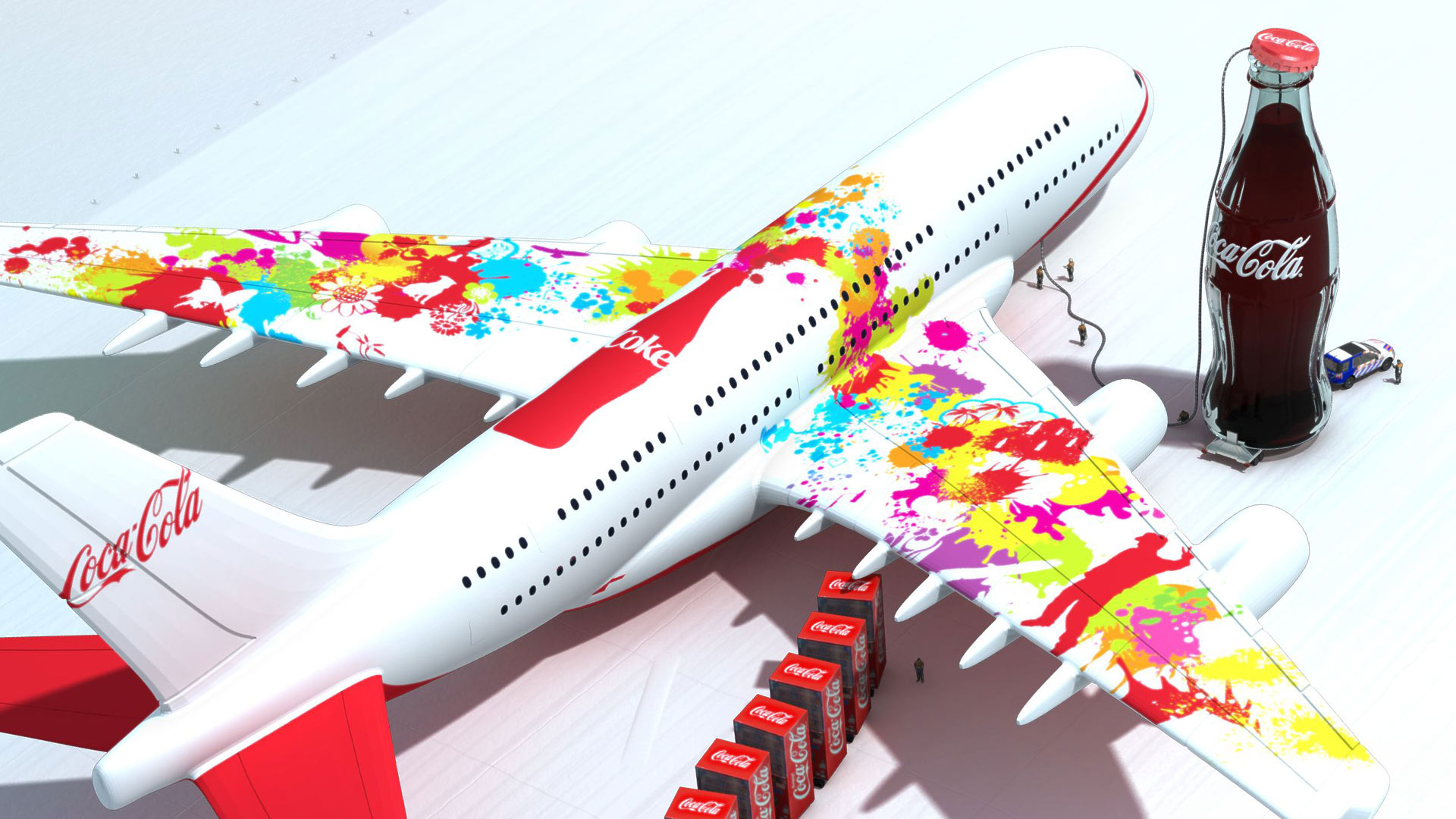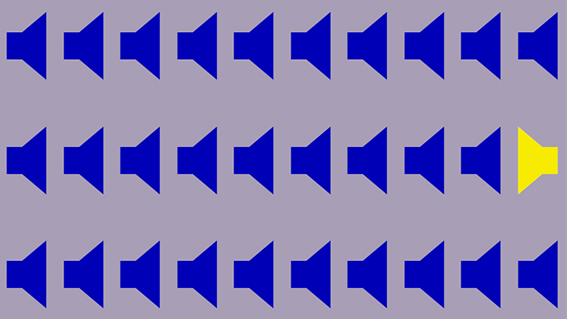
All we want to do is play!
Gamification sells
- Length1.146 words
- Reading Time3 min 49 sec
- Create
Engineer
Advise40%
20%
60%
- Introduction
- Central elements of gamification
- In a nutshell: flow
- Gamification at its best
- Too long; didn't read

Winning feels so good.
A well-deserved victory stimulates self-confidence, pushes the ego and definitely establishes a bit of pride; so why leave this large amount of positive effects untouched? This question came to the advertisers and marketers’ minds pretty quickly and allowed them to call into existence a strategy termed gamification.
Gamification described the integration of ludic mechanisms into marketing associated activities. The aim is to encourage customers to engage with the activity by calling on their play instinct and to increase the entertainment value. The right incentives lead to large presences on a regular basis and, do not commonly involve various viral effects.
We do not want to take part in the discussion where gamification starts or where it ends. For some, frequent flyer programs and loyalty cards are relevant, whereas for others, there must be avatars and badges present. Regardless of the perspective of the individual, each variant must consist of central elements, which guide the way to an adventure of gamification.
Central elements of gamification
The challenge
It is time to come clear: rules, requirements, and overall goals must be clearly formulated and have to be visible and comprehensible. Different actions within the game can carry it forward, yet he needs to know which shall he have to collect various product codes? Does he have to do well in everyday life and put evidence of his actions on the web? Does his online shopping card have to meet any specific criteria? Of course, also hidden rewards can increase the pleasure of playing when the accidental discovery comes as a big surprise. Yet, overall the gamification concept must be transparent to the gamer.
The incentive
A game without a clear reward will rarely be seen as an actual game, since the feeling of victory alone is an obvious requirement. Depending on the type of game, whether it is digital badges, financial incentives, or real-life goodies - all of them can be presented as a gratification for achievements or (stage) victories. The choice of reward depends on a number of factors, starting with demographics and the play behavior of the given target group. Also, the capabilities regarding the medium and the core are considered as secondary attributes of the respective company or brand.
The gamer
He is the centerpiece of each of every gamification approach and is the one to decide on success or failure of the given activity. Therefore, the application ought to give the gamer the opportunity to experience an adventure that meets specifically to the one tailed concept, which provides the incentives and designs for what he was hoping for. Depending on the given target group, there is a large variety of preferred goals, requirements, techniques, strategies and competition concepts – so what does your gamer desire?
The leaderboard
He can be fast, strong, and respectable – if a gamer does not have the chance to compare his performance to one of competitors’, then normally his motivation drops rapidly. Popular forms of representation in order to function as a stimulus are leaderboard, the transparent display of already established or still remaining badges. The numbers of competitors, who already have earned the respective badge, can also be shown as an encouragement to play the game.
The design
From “Ludo” to “World of Warcraft” – the various graphics and designs of a game can be as diverse as the variety of games itself. For the option of the ideal design, it is all about knowing the real motivation and engagement of the target group, using it and also promoting it. While incentive is boosted through extrinsic motivation, design rather functions as a method of intrinsic motivation. So considering how (collecting / knowing / killing) the protagonist (user himself / hero/ computer mouse) masters the adventurous of the world (comic replication of Vienna / inner life of an elevator / error seeking game on the website) is crucial.
The goal
The company’s goal is what eventually begins to matter rather than goal of the gamer. Despite all the entertainment that goes on during the game, this may never fall into oblivion. Are forms of awareness supposed to be generated? Are sales increases the only things that should count? Or should a new product rather be equipped with various images as quick as possible? A popular game per se may be nice but this is not what it is all about – it’s actual impact it has on the company is what counts as a result.
In a nutshell: flow
The Hungarian psychology professor named Mihály Csíkszentmihályi describes his established theory called
 "flow" (www.ted.com)
"flow" (www.ted.com) : as one that describes the principle of the human joy of playing, which has fostered to become the concept of gamification. The center of attention is placed on the one activity which the gamer is occupied with. Csíkszentmihályi defines the elements of flow as follows:
: as one that describes the principle of the human joy of playing, which has fostered to become the concept of gamification. The center of attention is placed on the one activity which the gamer is occupied with. Csíkszentmihályi defines the elements of flow as follows:The acitivity has a clear set of goals
- We are able to concentrate on our action
- The perceived challenges and one’s own perceived skills are in a balanced relation
- We sense personal control over the activity
- We feel easiness
- The subjective experience of time is altered
- Action and consciousness meld
All elements of the flow do not have to be fulfilled at the same time for each situation. Nevertheless, an important and crucial factor is the distinction from short-term feelings of excitements to the long-lasting euphoria that leads to feelings of both happiness and target oriented attention or even motivation. Therefore, the ideal condition can be generated and used within the meaning of gramification.
Gamification at its best
Gamification is applicable to numerous areas of use due to its diverse design and implementation of possibilities – global mega brands and non-profit organizations use the potential along with educational institutions and communication departments.
One of the most successul examples is last years
 Nike+ FuelBand (www.nike.com)
Nike+ FuelBand (www.nike.com) : a wristband that is able to collect various data about the carrier's movements. The app associated with the wristband provides an overview about activities, calorie consumption, and other statistics. For the company, which implies a sweeping blow. Having a positive image effects the brand on sale increases, social interaction as well as – on regular usage – even an enhancement of the user's’ fitness levels. The software enables users to challenge friends as well as total strangers to athletic battles and presents itself as one object for sure and that is gamified.
: a wristband that is able to collect various data about the carrier's movements. The app associated with the wristband provides an overview about activities, calorie consumption, and other statistics. For the company, which implies a sweeping blow. Having a positive image effects the brand on sale increases, social interaction as well as – on regular usage – even an enhancement of the user's’ fitness levels. The software enables users to challenge friends as well as total strangers to athletic battles and presents itself as one object for sure and that is gamified. Another, far less prominent example has been brought to us by McDonalds for several years now. The company’s
 interpretation of the classic board game "Monopoly" (www.mcdonaldsmonopoly.info)
interpretation of the classic board game "Monopoly" (www.mcdonaldsmonopoly.info) features stickers on fast food products’ packages that manage to turn out to be instant wins, collectors’ cards or blanks. Through this combination and series of various cards allows them for further participation. Not only does one get a feeling of joy and curiosity while making a purchase but also sales increase significantly on a regular basis when this form of promotion is well underway.
features stickers on fast food products’ packages that manage to turn out to be instant wins, collectors’ cards or blanks. Through this combination and series of various cards allows them for further participation. Not only does one get a feeling of joy and curiosity while making a purchase but also sales increase significantly on a regular basis when this form of promotion is well underway. Image, sales, awareness; and a whole lot of joy when playing. The potential of gamification must neither be underestimated nor exhausted.
A rather less famous but perfectly integrated example is the
 trading cards of the gaming platform Steam (steamcommunity.com)
trading cards of the gaming platform Steam (steamcommunity.com) . Games that are considered to be part of promotion allow their cards to be gained and redeemed or changed afterwards. Similar to the concept of Monopoly specific series, also allow for higher bonuses once fully completed. What’s the highlight in that? Only one half of the cards required can be gained on your own, the other half must be traded with other gamers involved. The prizes consist of game-related rewards such as avatars, backgrounds and equipment as well as discounts on Steam games. Thus, not only the community receives a boost due to the social necessity of trading rather other games – be they old or new – are also more attractive and appealing to play.
. Games that are considered to be part of promotion allow their cards to be gained and redeemed or changed afterwards. Similar to the concept of Monopoly specific series, also allow for higher bonuses once fully completed. What’s the highlight in that? Only one half of the cards required can be gained on your own, the other half must be traded with other gamers involved. The prizes consist of game-related rewards such as avatars, backgrounds and equipment as well as discounts on Steam games. Thus, not only the community receives a boost due to the social necessity of trading rather other games – be they old or new – are also more attractive and appealing to play. Image, sales, awareness: along with a large dose of enthusiasm. The potential gamification has to offer must neither be underestimated or shattered. Regardless of industry, branch, user, target, or budget, all can be used as requirement for the perfect game. Often times it’s the search for it that may take a little while.
Too long; didn't read
Related Articles
Take off to the future
Coca Cola Beverages
Employer branding and unconventional sales trainings in 3D around the slogan "take off to the future".
[ 3D information system | advise | employer branding ]
Compete to win
Fellner Wratzfeld & Partner
Total commitment to causes and clients. Able to master any challenge with body and mind. The image brochure for fwp shows determination as well as ambition.
[ brochure | image | print | create ]
advise
Finding new approaches
We practice what we preach. kalbeck.media provides comprehensive support in the search for successful solutions between both the poles of trend and the ones of tradition.
Against the stream
Breaking through digital standards
Between the norm and taking risk to reach beyond the regular, lies a very fine line that drives respectable web design. Though standards are often inevitable to uphold, individualization must transpire at all times where it is applicable.





